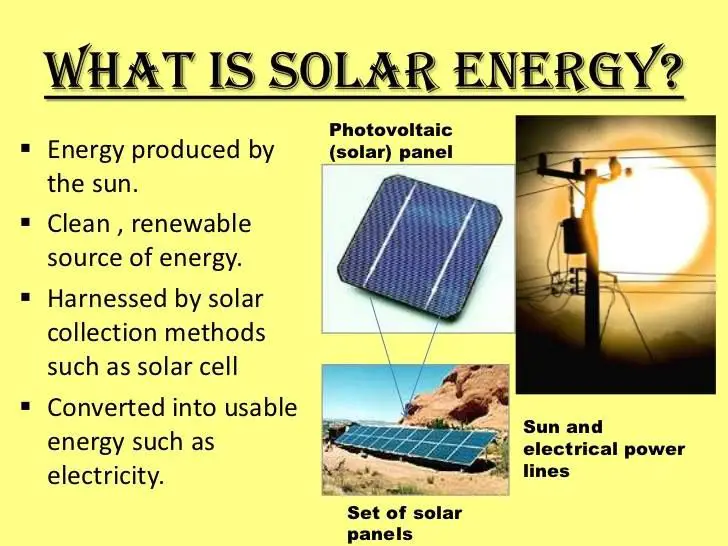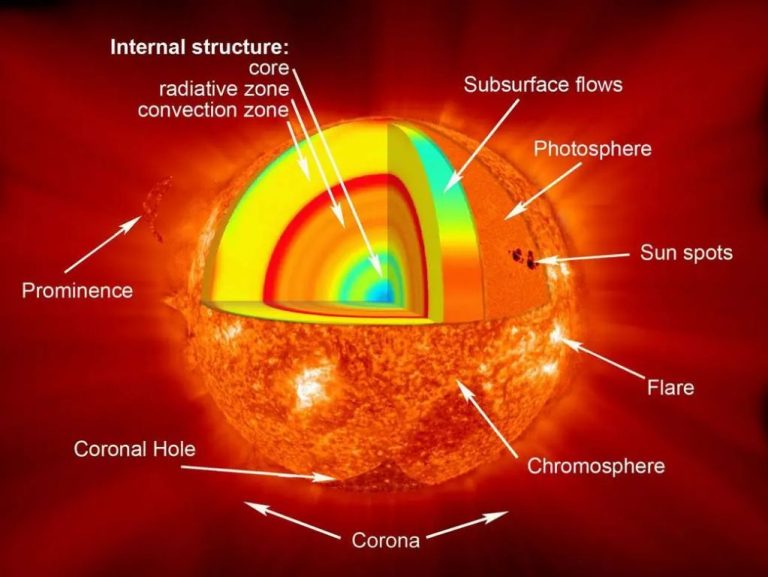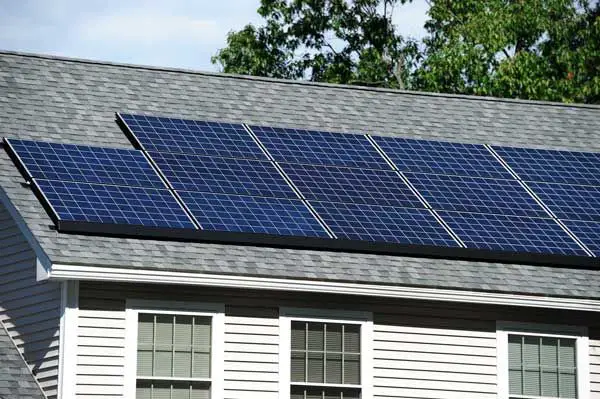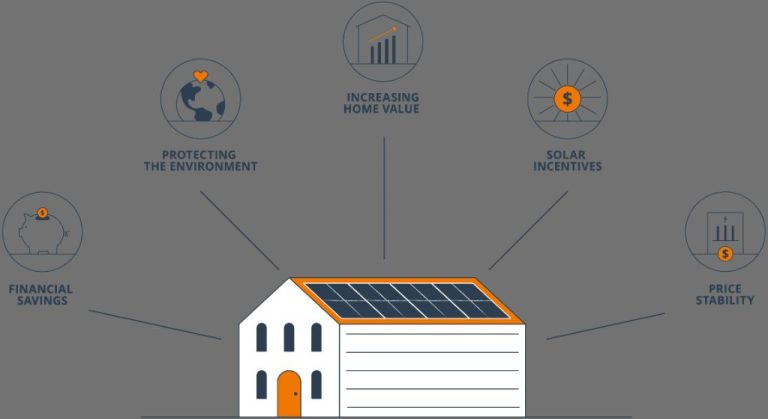What Is The Meaning Of Sun Energy?

Solar energy, also known as sun energy, refers to the radiant energy emitted by the sun. It is the source of nearly all energy on Earth and powers natural processes like photosynthesis. This renewable energy source has many important uses and benefits for humanity. This overview of sun energy will cover the topics of solar radiation and the ways it is harnessed, its various uses, its economic benefits and limitations, and the potential future of solar energy.
The Sun as an Energy Source
The sun is an immense ball of gas that radiates a tremendous amount of energy. It is by far the most abundant source of renewable energy on Earth. Through the process of nuclear fusion at its core, the sun converts over 4 million tons of matter into energy every second (1). This energy radiates outward from the sun in all directions in the form of electromagnetic radiation.
The Earth receives only a tiny fraction of the sun’s total energy output. The amount of solar energy that passes through a square meter outside the Earth’s atmosphere over the period of one year is known as a solar irradiance. At the top of the atmosphere, the average solar irradiance is approximately 1,361 watts per square meter. This value is known as the solar constant. After accounting for the atmosphere, the solar irradiance at sea level on a surface perpendicular to the sun’s rays at noon on a clear day is approximately 1,000 watts per square meter (2).
Solar Radiation
The sun produces electromagnetic radiation across a broad spectrum of wavelengths, known as the solar spectrum (https://sunearthday.nasa.gov/2006/locations/spectroscopy.php). This radiation originates from nuclear fusion reactions deep within the sun’s core. The spectrum of sunlight contains all the colors of the rainbow, from long radio waves to short gamma rays.
The distribution and intensity of radiation across the solar spectrum is known as solar irradiance. Most of the sun’s energy output is in the visible and infrared portion of the electromagnetic spectrum. Ultraviolet, x-rays, and gamma rays make up a smaller portion. Absorption lines can be seen in the solar spectrum, corresponding to elements present in the outer layers of the sun (https://spark.iop.org/absorption-lines-spectrum-sunlight).
Solar irradiance at the top of the Earth’s atmosphere averages around 1,360 watts per square meter. This is known as the solar constant. However, solar irradiance varies over different timescales due to changes in solar activity and the Earth’s movement around the sun.
Harvesting Solar Energy
There are several technologies used to harvest solar energy and convert it into useful forms like electricity or heat:
Photovoltaics (PV) use solar cells made from semiconducting materials like silicon to directly convert sunlight into electricity through the photovoltaic effect. When sunlight hits the PV cell, the energy knocks electrons loose allowing them to flow and produce an electric current. PV panels can be used in small scale installations like solar powered calculators or in large utility-scale solar farms.
Concentrated solar power (CSP) systems use mirrors or lenses to concentrate sunlight onto a receiver containing a heat transfer fluid. The concentrated heat is used to drive a steam turbine and generator to produce electricity. CSP allows energy to be stored thermally so it can continue generating electricity even when the sun isn’t shining.
Solar heating and cooling systems harness the sun’s thermal energy to provide hot water and space heating as well as air conditioning. usually through the use of solar thermal collectors. These collectors absorb sunlight to heat water or other fluids that can be used directly or transfer heat to a homes HVAC system.
Uses of Solar Energy
Solar energy has many applications that benefit our daily lives. Some of the main uses of solar energy include:
Electricity Generation – Solar panels convert sunlight into electricity that can power homes, businesses, and the electric grid. Solar photovoltaic is a fast-growing electricity source around the world.
Heating & Cooling – Solar thermal collectors capture heat from the sun to provide hot water and space heating in homes and buildings. Solar energy can also power cooling systems through solar absorption chillers.
Industrial Processes – Concentrated solar power systems generate high temperatures capable of powering industrial processes like enhanced oil recovery, mining operations, and desalination plants.
Transportation – Electric vehicles can be powered by solar-generated electricity through the grid or direct charging. Some vehicles also directly use solar energy through solar panels installed on car roofs or hoods.
Benefits of Solar Energy
Solar energy has several key benefits that make it an attractive renewable energy source. First is its clean and renewable nature. Unlike fossil fuels, solar power does not produce greenhouse gas emissions or air pollution when generated. Solar relies on the limitless power of the sun, making it a renewable source that will be available as long as the sun shines (All the advantages of solar energy).
Second, solar energy allows for energy independence and security. Solar power can be generated locally, reducing reliance on imported fuels. Households and businesses with solar panels can produce their own electricity, providing energy even if the grid goes down (The Advantages and Disadvantages of Solar Energy).
Next, growth in solar energy can create jobs and boost local economies. Solar installation and manufacturing requires workers, so expanding solar generation can provide employment opportunities and economic activity. The solar workforce grew by 167% in the last decade in the US alone.
Finally, solar output peaks during the day, aligning well with electricity demand. This peak energy matching means solar can provide ample power when energy needs are highest, reducing reliance on natural gas peaker plants.
Limitations of Solar Energy
Solar power has some limitations that are worth considering. First, solar energy is intermittent and depends on the sun shining. The amount of solar energy that can be harvested varies based on the location, time of day, time of year, and weather conditions. Large-scale batteries can store solar energy for use when the sun is not shining, but these are currently expensive and come with their own environmental impacts (Greenmatch).
Second, solar energy systems can require large amounts of space, especially solar farms or concentrated solar power systems. Solar panel installations require clearing land to install the panels and associated equipment. This can involve using undeveloped land or cutting down trees (Constellation).
Finally, while solar power generation is clean and renewable, manufacturing solar cells and modules has an environmental impact. The lifespan greenhouse gas emissions associated with solar system equipment fabrication, installation, operation, and decommissioning should be considered when evaluating the technology’s benefits.
Solar Energy Economics
The levelized cost of energy (LCOE) for solar photovoltaics has declined dramatically in the past decade, making it increasingly cost-competitive with fossil fuel sources. According to Lazard, the unsubsidized LCOE for utility-scale solar PV has fallen 88% since 2009, from $359 per MWh to just $44 per MWh in 2019. This downward trend in costs is attributed to improvements in module efficiency, economies of scale in manufacturing, and reductions in balance of system costs like inverters and racking equipment. Government incentives have also played a key role in accelerating solar adoption and pushing down costs through policies like federal tax credits, state renewable portfolio standards, and net metering. As solar expands and achieves greater economies of scale, costs are projected to continue falling. The EIA predicts utility-scale solar PV costs will drop another 40% by 2050. These declining costs are making solar increasingly competitive with fossil fuel power on a dollar per kilowatt hour basis.
Growth of Solar Energy
Solar energy capacity has been growing rapidly over the past decade. According to Solar Energy Growth Statistics , global solar PV installations reached 154 gigawatts (GW) in 2021, up from 139 GW in 2020. This represents a nearly 10% increase year-over-year.
Much of the growth in solar has been driven by China, which accounted for over 35% of new global solar installations in 2021 at 54.9 GW. As of 2021, China had the most total solar PV capacity in the world at 308.5 GW. Other top markets for new solar installations include the United States, India, Japan, Germany, Australia and Vietnam.
Many governments have implemented policies and incentives to encourage solar energy adoption, such as feed-in tariffs, tax credits, renewable portfolio standards and net metering. Over 120 countries now have renewable energy targets, and solar makes up a significant portion of those goals. For example, the EU aims to source 32% of its energy from renewables by 2030. With costs continuing to decline, solar is poised for dramatic growth worldwide in the coming decades.
Future Outlook
The future projections for solar energy technologies are broadly optimistic. According to projections, the market for solar photovoltaics and concentrated solar power is expected to grow substantially in the coming decades as costs continue to decline and efficiency improves. Solar energy has the potential to meet a significant portion of future energy demand, with some projections estimating solar could provide up to 30-50% of global electricity by 2050.
However, there remain challenges to realizing the full potential of solar energy. These include continuing to drive down costs and improve efficiency of solar panels, developing more efficient energy storage solutions to overcome solar’s intermittency, building out transmission infrastructure to connect solar resources with demand centers, and ensuring supportive policy environments that facilitate solar deployment. With continued technological improvements and falling prices, solar is poised to play a major role in the global energy mix, but work remains to fully overcome technical, economic and political obstacles.
Overall, projections show solar energy has tremendous room for growth in the coming decades, with the potential to provide a substantial share of global electricity demand. But this will require sustained investments, policy support, and technological innovation to improve competitiveness with conventional energy sources.
Sources:
https://www.researchgate.net/publication/342698737_Investigation_on_Fundamentals_of_Solar_Energy
https://freefutures.org/wp-content/uploads/2014/02/2010_World_Solar_Energy_Review_Technology_Markets_and_Policies.pdf





